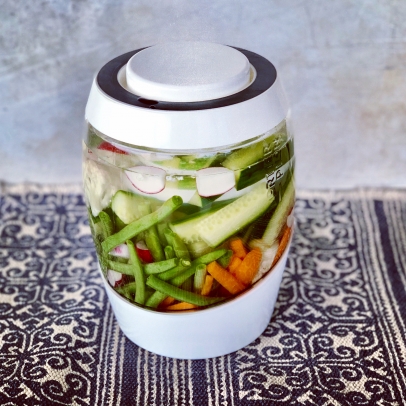The Fermented Life
Fermenting vegetables is a classic method of food preservation, and one of the easiest to do at home. Think beyond sauerkraut and kimchi, and try combining cauliflower, radish, garlic, carrots, beans — beautiful as well as flavourful. And beneficial for your gut health as well!
We often hear that fresh foods are the healthiest for us, and rightly so, but the health benefits of fermented foods are undeniable — especially when you can ferment them in your own kitchen. Lacto-fermentation of foods is an ancient art, in which vitamins and other nutrients break down into more easily digestible forms.
It's not unlike pickling, but uses a salty brine instead of vinegar, so the beneficial bacteria eat the sugars in the vegetables on their way to becoming pickles. As a result, lactic acid is released, turning the saltwater into an acidic solution; this process is called lacto-fermentation.
The inspiration for this mix of bright veggies came from Shahzadi Devje on her blog, but there are lots of great books and recipes. A couple of classics I like are by Sandor Ellix Katz, who is a well-known name among modern fermentation enthusiasts. He’s written two books on the subject. The first, Wild Fermentation (Chelsea Green Publishing, 2003) is full of recipes from sauerkrauts and pickles to ginger beer and kombucha. Nearly ten years later, he released The Art of Fermentation (Chelsea Green Publishing, 2012), a compendium of ideas from around the world about the myriad ways to ferment various foods.





